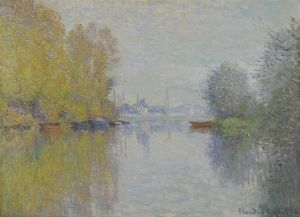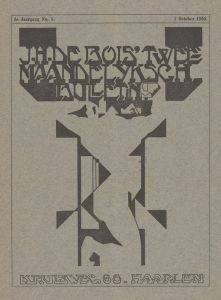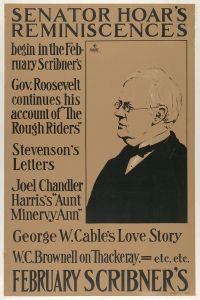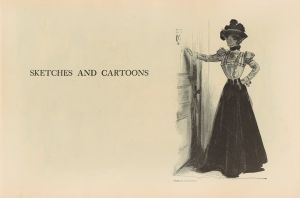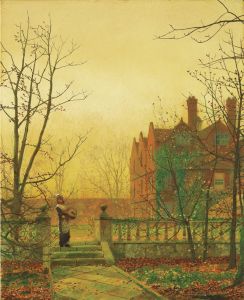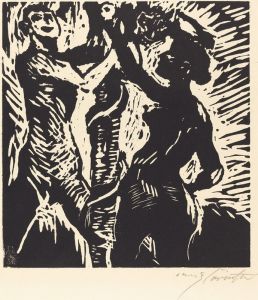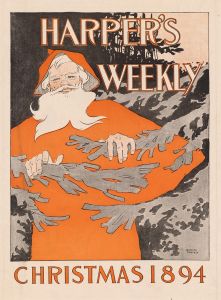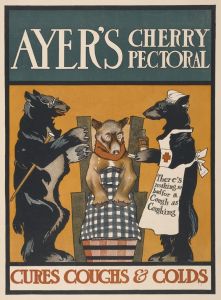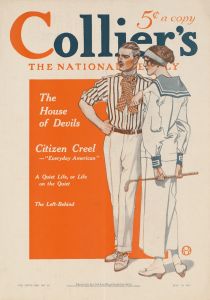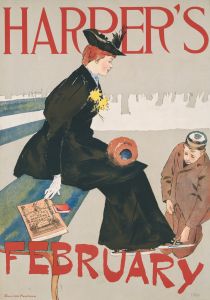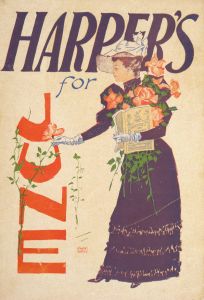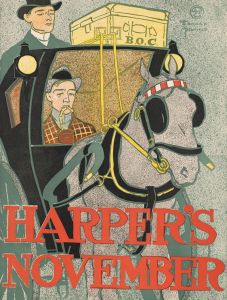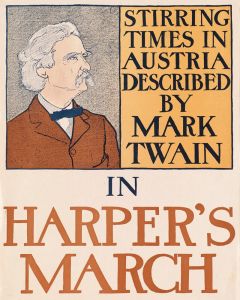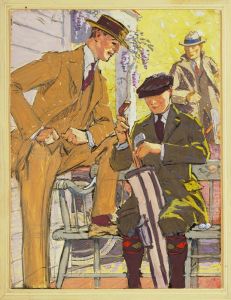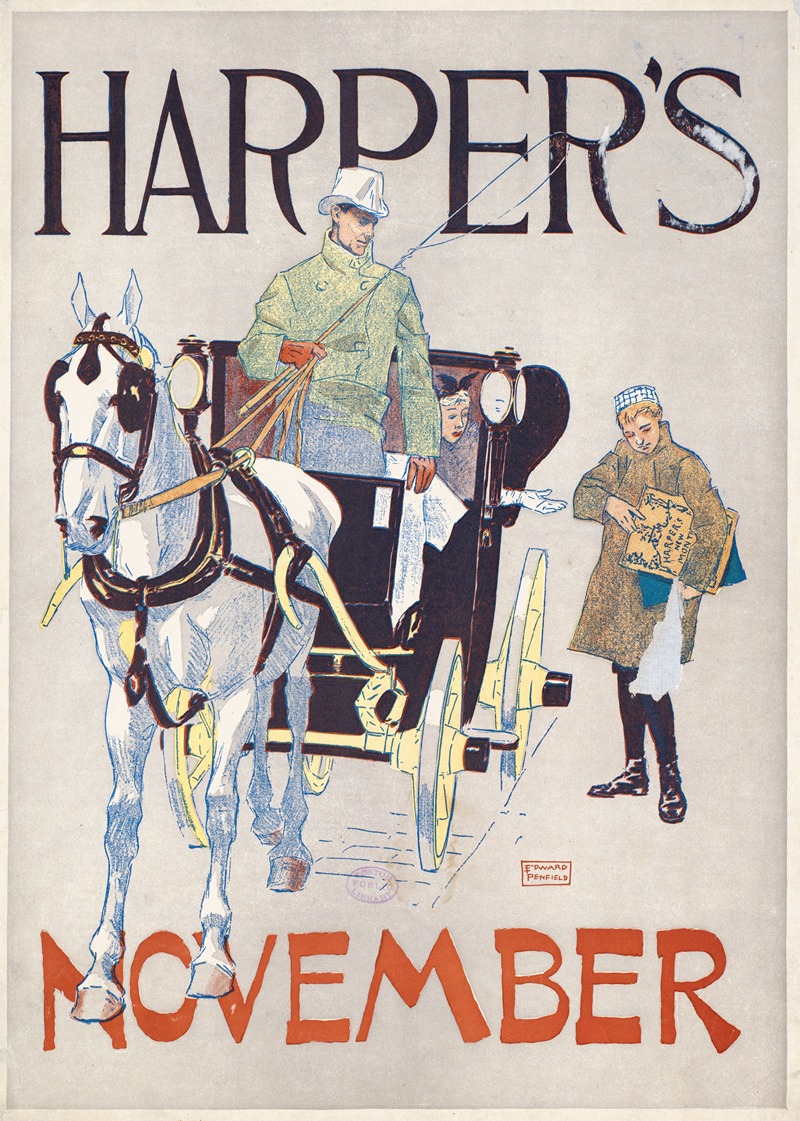
Harper’s November
A hand-painted replica of Edward Penfield’s masterpiece Harper’s November, meticulously crafted by professional artists to capture the true essence of the original. Each piece is created with museum-quality canvas and rare mineral pigments, carefully painted by experienced artists with delicate brushstrokes and rich, layered colors to perfectly recreate the texture of the original artwork. Unlike machine-printed reproductions, this hand-painted version brings the painting to life, infused with the artist’s emotions and skill in every stroke. Whether for personal collection or home decoration, it instantly elevates the artistic atmosphere of any space.
Edward Penfield was an influential American illustrator and a key figure in the development of graphic design in the late 19th and early 20th centuries. One of his notable works is the cover illustration for the November 1895 issue of Harper's Magazine, commonly referred to as "Harper’s November." This piece is a quintessential example of Penfield's style and his contribution to the art of poster design.
Penfield's work for Harper's Magazine is significant as it represents a period when magazine covers were becoming an important medium for artistic expression and commercial art. His illustrations were not only visually appealing but also served as effective marketing tools, drawing readers to the publication. "Harper’s November" is a reflection of the Art Nouveau movement, characterized by its elegant lines, stylized forms, and harmonious composition.
The illustration for "Harper’s November" features a woman dressed in autumn attire, holding an umbrella, which is suggestive of the November weather. The use of earthy tones and the depiction of falling leaves capture the essence of the season. Penfield's ability to convey a narrative through simple yet evocative imagery is evident in this work. The woman's attire and posture suggest a sense of movement and anticipation, inviting the viewer to imagine the story beyond the image.
Penfield's technique involved bold outlines and flat areas of color, a style that was influenced by Japanese woodblock prints, which were popular among Western artists during this period. This approach allowed for clear and impactful imagery that could be easily reproduced in print. The simplicity and clarity of his designs were well-suited to the lithographic printing process used for magazine covers at the time.
Edward Penfield served as the art director for Harper's Magazine from 1891 to 1901, during which he produced a series of monthly covers that are now considered iconic. His work helped to elevate the status of illustration and graphic design, bridging the gap between fine art and commercial art. Penfield's covers for Harper's are celebrated for their artistic merit and their role in shaping the visual culture of the era.
"Harper’s November" is a testament to Penfield's skill as an illustrator and his ability to capture the spirit of the times. His work remains influential, and he is often credited with helping to define the visual language of American illustration in the late 19th century. Penfield's legacy is evident in the continued appreciation of his work, both as a reflection of its historical context and as a source of inspiration for contemporary designers.
In summary, Edward Penfield's "Harper’s November" is a significant piece of art that exemplifies the fusion of artistic and commercial interests during a transformative period in graphic design. Through his innovative approach and distinctive style, Penfield left an indelible mark on the world of illustration.





